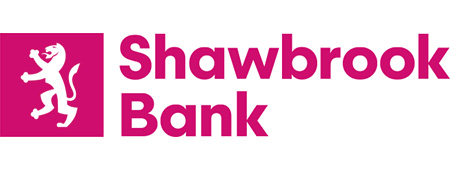Best Bridging Loans Compared
For a short term bridge between an outstanding debt and future credit or income, the bridging loan is there for you.
Bridging Loans – Fast Facts:
Get to know the facts about bridging loans:
- Also known as bridge loans.
- Short term for a large amount of money, from 1 month to 2 years+.
- Fixed end dates are “closed bridging loans”, and are cheaper.
- Open end dates are “open bridging loans”, more expensive.
- Many extra chargers can apply.
- Interest can be charged monthly, all at the end, or borrowed and repaid at the end.
- Most often used when buying a new house if you haven’t yet sold your previous home.
- Popular with property investors, allowing them to upgrade and sell a house with this short term finance.
Read the full guide below, or skip to the best rates.
Compare the Best Bridging Loans for your situation
There are different types of bridging loans, and so we’ve split the comparisons into categories for each. You can also compare bridging loans for property development here.
1. Best Up To 2 year Low Interest Rate Bridging Loan – Shawbrook Bank
Maxiumum LTV 75%.
1 month – 2 years loan duration.
£50,000 – £15,000,000 loan amount.
0.55% – 0.98% Monthly interest.
2. Lowest Interest Rate Short Term Bridging Loan – Together Money
1st Charge: 75% LTV Max, 2nd charge: 65% LTV max.
1 month – 1 year loan duration.
£26,000 – £5,000,000 Loan value.
0.49% – 1.55% Monthly Interest.
Highest Loan-to-Value Bridging Loans – Shawbrook Bank
Maxiumum LTV 75%.
1 month – 2 years loan duration.
£50,000 – £15,000,000 loan amount.
0.55% – 0.98% Monthly interest.
Lowest Loan-to-Value Bridging Loans – Regentsmead
Maximum LTV 50%.
6 month – 18 month loan duration.
£100,000 – £2,000,000 loan amount.
0.75% – 1.5% Monthly interest.
What is a bridging loan?
Much like a bridge allows you to cross over from one piece of land to another, a bridging loan allows you to cross over from one financial situation to another. It makes funds available for the time period between a debt coming due, and your main line of credit becoming available. It basically acts as a short-term loan that allows you to have the money now – usually at a significantly higher rate than longer term loans – and still get a better credit deal a little later. They aren’t meant to be long term, and they are usually more expensive than longer term loans.
One of the most common situations in which a bridging loan may be practical, is when you want to buy a new home before the sale of your current home is complete. Bridging loans are also commonly used by people planning to buy, renovate, and sell a home over a short period of time. This is called ‘flipping.’
How do bridging loans work?
Bridging loans are usually given with the understanding that they will be paid off in a short time. In some cases, this time is extended due to unforeseen or unfavourable circumstances, but due to the higher than standard rates and fees that they carry, most borrowers only take out a bridging loan of they have a clear, plausible exit routes. Exit routes can include imminent alternative (such as a standard mortgage or sale of the property), or substantial personal or company resources to bear the higher carrying costs (such as other wealth or assets against which they can secure alternate credit).
Bridging loans can carry rates around 1.5% per month or even higher. If serviced over a year, this amounts to 18% or more in interest fees. Consider a loan of £200,000. In the short term, the cost to carry this loan for a month or two may be worthwhile, but if not paid off quickly, interest fees would cost £36,000 per year. With administration fees added to this, it is easy to understand why these loans should only be used for short-term, very specific purposes.
Who should get a bridging loan?
You should only get a bridging loan if you need it to secure a property, but expect to have alternate financing in place in a short period of time (i.e. a standard mortgage, or the proceeds from the sale of the same or other property).
Bridging loans are also practical for covering expenses when you are sure that income is imminent and secured. For example, a bridging loan may allow you to cover the cost of completing a job for which payment is soon expected. This should be done with caution though, as unexpected delays are expensive.
Who provides bridging loans?
Banks sometimes provide bridging loans, but more often they are provided by specialist lending companies or private individuals. These lenders sometimes borrow money from the bank and then lend it to higher-risk borrowers, taking on the risk themselves in trade for the difference in interest charged, and administration fees. Such companies and individuals may be legitimate and very helpful, but the quality of lender in that industry varies immensely. Take care in choosing a reputable, regulated lender, and be sure to read (and understand) all of the small print included with all contracts and documentation.
Types of Bridging Loan
Bridging loans can come in several guises, just like mortgages, but tend to have less flexibility, and much higher carrying and administration costs than their more standard counterparts.
Bridging loans can be fixed rate, meaning that they are set to one interest rate which won’t fluctuate over the agreed period. This rate is usually higher than the initial variable rate, but if the Bank of England rate rises, the borrower is protected from any increased cost of the loan. Likewise, a lower Bank of England rate will not benefit the borrower, as the interest rate is unchanging.
Variable-rate mortgages are usually set at a certain amount above the Bank of England rate, and move up and down as the bank of England rate is moved up or down. This means you might get a better deal if rates drop, but it can also mean increased payments and costs if the rate increases. Where standard mortgage rates are often around 2% higher than the Bank of England rate, bridging loan rates may be 16% (or more) above the Bank of England rates, when extrapolates over a full year.
You can compare the best mortgage deals in the UK here.
Bridging loans can be designated as ‘first charge’ or ‘second charge.’ This means that the lender will either be first to get their money back in the event of a foreclosure or default (first charge), or second to get their money back (second charge).
Most banks will offer mortgages on the condition that they have first charge priority, so make sure you arrange things to allow the successful completion of any mortgage applications you make. In other words, make sure that a bridging loan with first-charge status doesn’t prevent you from getting your standard mortgage.
You can learn about this history of bridging loans here: https://www.mortgagefinancegazette.com/features/brief-history-of-the-bridging-finance-sector-04-08-2016/
Bridge loans will also be designated as ‘closed’ or ‘open.’ Closed-bridge loans are for borrowers with a clear exit strategy – such as plans to secure a standard mortgage, or to sell the property against which the money was borrowed. Open-bridge loans are more risky, as the borrower doesn’t have a clear exit strategy and the loan may carry over a longer period of time. This is expensive for the borrower, because it is riskier for the lender and can demand a higher rate of interest and less flexibility.
Pros and Cons of Bridging Loans
Bridging loans are often quick to arrange, sometimes in a matter of hours. They can sometimes allow you to pay the interest at the same time you repay the principle, meaning that they allow for very low payment levels in the short term. They can also be paid off quickly without penalties for early repayment.
On the other hand, they are expensive, carrying higher interest rates and substantial administrative fees.
Alternatives to a Bridging Loan
Whenever possible, try to find a less expensive alternative to bridging loans. Sometimes you will be able to remortgage, or take on a second mortgage. Personal loans or lines of credit are available to borrowers with good credit ratings and/or substantial assets to secure the loans.
Frequently Asked Questions on Bridging Loans
Here are some of the most common questions around the topic of bridge loans online here in the UK.
What are the interest rates on bridging loans?
Bridging loans demand higher interest rates, because they are quick, higher risk, and intended to be temporary. Rates are commonly between 1% and 1.5% per month (12-18% annually) as compared to most standard mortgage rates which are commonly 5% per year, or even lower.
How long does the application process take?
The application process time varies depending on the type of lender you go to, but it can be as little as a few hours, to a day or two. Major banks tend to take longer to process loans, as they take more time to check into your credit history, go through policy protocols, and other processes. Specialised bridging loan lenders are designed to be very fast, and the checks they require are often less comprehensive.
Do I have to be a homeowner to have a bridging loan?
No, but any secure equity you have will help in securing a bridging loan, as will the usual factors like credit rating and financial stability. The more money you wish to borrow using a bridging loan, the more likely it is that the lender will want to secure property as collateral on the loan.
What if I have a bad credit rating?
Since bridging loans are high risk, a bad credit rating is a serious challenge. It marks you as riskier, and can mean higher rates, the need for more security than usual (such as lending against a property with equity in it), or a negative result for the loan application.
We have an article on improving your credit rating here.
What is the exit route from your bridging loan?
The exit route (sometimes called ‘exit strategy’) from your bridging loan depends mostly on the reason you want to take out the loan in the first place.
If you are trying to secure a new home prior to the completed sale of your current home, then your strategy is likely to take the money from the eventual sale of your current home and apply it to the bridging loan. In that scenario, the bridging loan would have been given to the bank to pay off an existing mortgage, enabling you to secure one on the new home – or to pay for the new home itself, with the intention of gaining a standard mortgage after the sale of your current home clears your existing one.
A common exit route for property developers is to secure the loan, purchase and renovate a property, and then sell the property at an increased price, thereby paying off the loan and walking away with a profit. In this scenario, the developer must be able to add in enough value to cover the expense of the loan, the renovation and administration costs, and the cost of carrying the property during the time taken to renovate and then sell it. This is obviously a risky practice if there are no sources of security on the loan, and can mean penalty fees and other costs if the loan must be carried longer than planned for.
Bridging loans are very useful, quick to obtain loans, but they must be used with caution, if at all, and should always be obtained in the context of a clear, plausible exit strategy.




